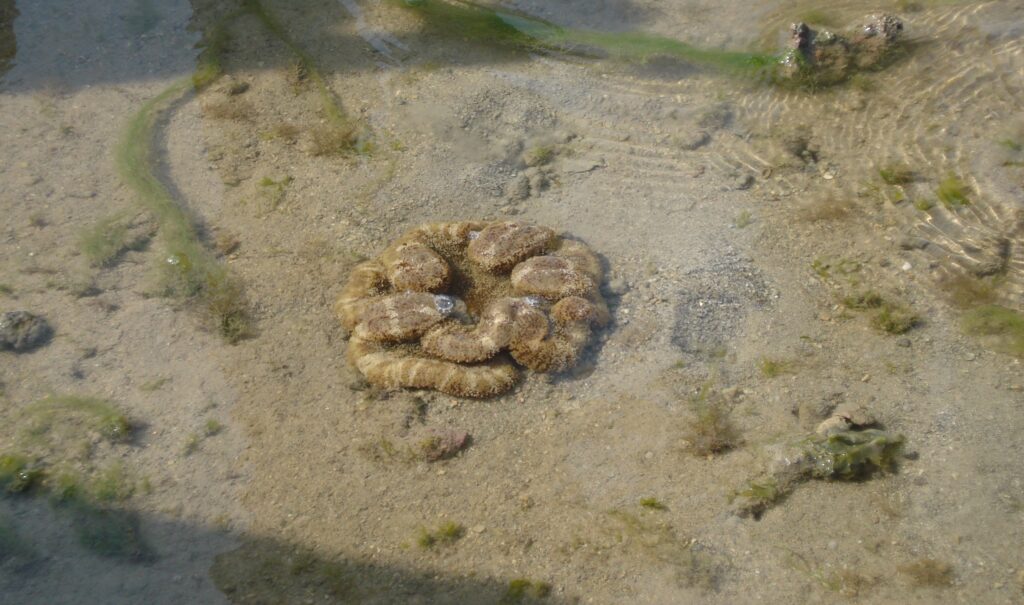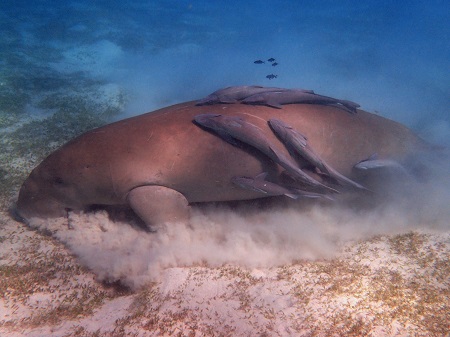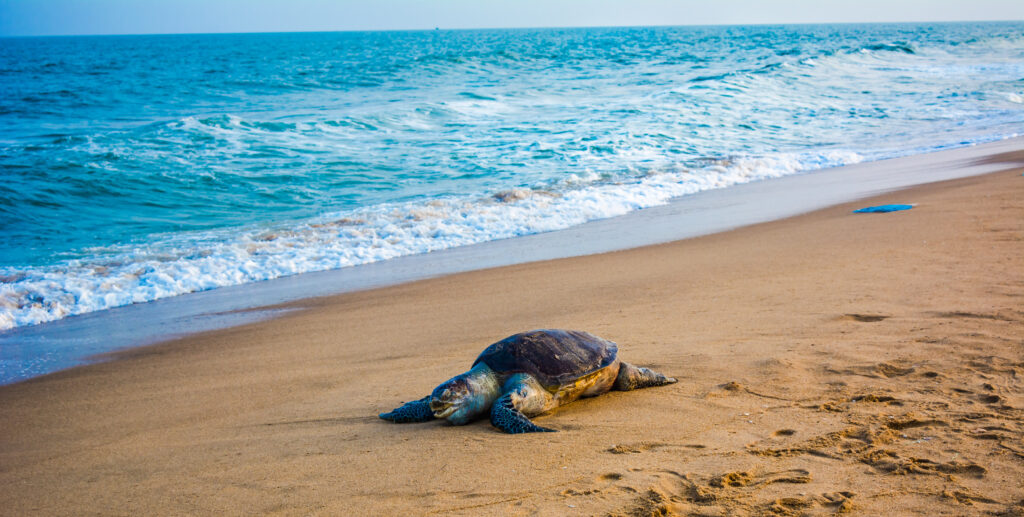
Table of Contents
What are Marine Parks?
Marine parks, also known as marine protected areas (MPAs), are designated areas of ocean and coastal waters that are legally protected and managed to conserve marine ecosystems, biodiversity, and natural resources. These areas are established with the aim of safeguarding marine habitats, species, and ecological processes from threats such as overfishing, habitat destruction, pollution, and climate change.
Marine parks can take various forms, including marine reserves, marine sanctuaries, marine conservation areas, and marine national parks. They may encompass diverse marine environments such as coral reefs, seagrass beds, mangrove forests, rocky shores, and open ocean habitats. Some marine parks also include terrestrial areas like islands, coastal wetlands, and estuaries.
What are the Primary Objectives of Marine Parks?
- Conservation of Marine Biodiversity: Marine parks protect and preserve a wide range of marine species, including fish, marine mammals, sea turtles, corals, and invertebrates, ensuring healthy population of these marine organisms.
- Sustainable Fisheries Management: Marine Parks, by establishing fishing zones, regulating catch limits, and implementing gear restrictions, aim to prevent overexploitation of marine resources and promote sustainable fishing practices.
- Habitat Protection and Restoration: Marine parks play a crucial role in conserving and restoring important marine habitats such as coral reefs, seagrass meadows, and mangrove forests, thereby providing essential ecosystem services.
- Scientific Research and Monitoring: Marine parks serve as living laboratories for scientific research and monitoring, providing valuable insights into marine ecosystems, biodiversity, and ecosystem dynamics. This helps researchers to address key conservation challenges.
- Education and Public Awareness: Through visitor centers, interpretive signage, educational programs, and outreach initiatives, marine parks engage local communities and visitors in conservation efforts and foster a greater appreciation for marine ecosystems.
Which are the 6 Marine Parks of India?
India’s coastline is adorned with breathtaking marine biodiversity, and marine parks offer a gateway to explore these underwater wonders. From vibrant coral reefs to elusive marine creatures, each of the marine parks presents a unique opportunity for adventure and discovery. In this blog post, we’ll embark on an underwater journey to unravel the mysteries of India’s marine parks.
1. Jamnagar Marine Park, Gujarat

Nestled along the Gulf of Kutch in Gujarat, the Jamnagar Marine Park stands as a testament to India’s commitment to marine conservation. Spanning over 400 square kilometers, this marine park is a haven for marine life and a paradise for snorkelers, divers, and nature enthusiasts alike. Established in 1982, the Jamnagar Marine Park is renowned for its rich coral reefs, seagrass beds, and mangrove forests. These ecosystems support a diverse array of marine species, including colorful reef fish, majestic sea turtles, and elusive dugongs.
One of the highlights of the Jamnagar Marine Park is its coral reefs, which boast a stunning variety of coral species. From branching corals to massive coral colonies, these underwater gardens are a sight to behold. But the beauty of the Jamnagar Marine Park extends beyond its coral reefs. The park is also home to mangrove forests, which play a vital role in coastal protection and biodiversity conservation.
Interesting Facts about Jamnagar Marine Park
- The Jamnagar Marine Park is part of the larger Marine National Park, which was the first marine protected area in India.
- The park is home to over 40 species of corals, making it one of the most diverse coral reef ecosystems in the country.
- Visitors can explore the park’s underwater wonders through guided snorkeling and diving tours offered by local operators.
- The park is also a popular spot for birdwatching, with numerous avian species found in its mangrove forests and coastal areas.
2. Gulf of Mannar Marine National Park, Tamil Nadu

Located along the southeastern coast of India, the Gulf of Mannar Marine National Park, established in 1986, is renowned for its pristine coral reefs and diverse marine life. Designated as a Biosphere Reserve by UNESCO in 1989, this marine park encompasses a network of 21 islands and islets, along with extensive coral reefs and seagrass beds. Visitors to the marine park can enjoy snorkeling, diving, and glass-bottom boat rides to explore its underwater wonders. The park is home to over 3,600 species of flora and fauna, including endangered species such as dugongs, sea turtles, and coral reefs.
Interesting Facts about the Gulf of Mannar Marine National Park, Tamil Nadu
- Biodiversity Hotspot: The Gulf of Mannar Marine National Park is recognized as one of the most biologically diverse areas in the world. It is home to over 3,600 species of flora and fauna, including rare and endangered species such as sea turtles, dugongs, and various species of corals.
- Coral Reefs: This marine park boosts of one of the healthiest stretches of coral reefs in the Indian Ocean. These coral reefs support a rich ecosystem of marine life, including colorful reef fish, crustaceans, mollusks, and other invertebrates
- UNESCO Biosphere Reserve: The Gulf of Mannar region has been designated as a UNESCO Biosphere Reserve.
- Ramsar Wetland Site: The Gulf of Mannar has also been recognized as a Ramsar Wetland of International Importance, emphasizing its ecological value as a crucial habitat for migratory birds, marine species, and coastal wetlands.
- Historical Importance: The Gulf of Mannar has a rich cultural and historical heritage, with evidence of ancient maritime trade routes dating back to the Roman period. The region was once a hub for pearl fishing and trading, and remnants of ancient settlements and shipwrecks can still be found underwater.
3. Mahatma Gandhi Marine National Park, Andaman and Nicobar Islands

The Mahatma Gandhi Marine National Park was established in 1983 to conserve the unique marine biodiversity and coral reefs of the Andaman and Nicobar Islands. Spanning across multiple islands and coastal areas with an area of 280 square kilometers, the park has since become a popular destination for eco-tourism and underwater exploration. This marine park comprises 15 islands, mangrove creeks, and fringing coral reefs.
Interesting Facts about Mahatma Gandhi Marine National Park
4. Rani Jhansi Marine National Park, Andaman and Nicobar Islands

Located near the capital city of Port Blair, the Rani Jhansi Marine National Park is known for its stunning coral reefs and marine life. The park encompasses a group of 15 islands, including North Button and South Button Islands, along with extensive coral reefs and mangrove forests. Visitors can indulge in snorkelling, diving, and glass-bottom boat rides to explore the park’s vibrant underwater world. The park is home to over 50 species of coral and 200 species of fish, making it a paradise for marine enthusiasts and nature lovers alike.
Interesting Facts about Rani Jhansi Marine National Park
- Rich Biodiversity: Rani Jhansi Marine National Park is renowned for its diverse marine ecosystem, which includes vibrant coral reefs, pristine beaches, and lush mangrove forests. The park is home to a wide variety of marine life, including colorful reef fish, sea turtles, sharks, and rays.
- Coral Reefs: The extensive coral reefs found here support a myriad of marine organisms, including corals, fish, crustaceans, and mollusks.
- Endangered Species: The marine park is home to several endangered species, including the dugong, a marine mammal often referred to as the “sea cow.”
- Ecotourism Activities: The marine park offers a range of ecotourism activities for visitors, including snorkeling, scuba diving, glass-bottom boat rides, and nature walks.
- Scenic Beauty: In addition to its rich biodiversity, Rani Jhansi Marine National Park is known for its scenic beauty, with crystal-clear waters, white sandy beaches, and lush greenery.
5. Malvan Marine Sanctuary, Maharashtra

Malvan Marine Sanctuary is located in the Sindhudurg district of Maharashtra, along the Konkan coast of India. Established in 1987, it spans an area of approximately 29 square kilometers and is known for its rich marine biodiversity and pristine coral reefs.
Interesting Facts about Malvan Marine Sanctuary
- Rich Biodiversity: The sanctuary is considered a biodiversity hotspot and is home to a diverse array of marine species, including coral reefs, fish, crustaceans, mollusks, and marine algae.
- Coral Reefs: Malvan Marine Sanctuary is renowned for its vibrant coral reefs, which support a wide variety of marine life.
- Underwater Visibility: The crystal-clear waters of Malvan Marine Sanctuary offer excellent visibility for snorkeling and diving enthusiasts.
- Adventure Activities: The sanctuary offers various adventure activities such as snorkeling, scuba diving, and glass-bottom boat rides, allowing visitors to experience the beauty and diversity of the underwater world.
6. Gahirmatha Marine Sanctuary, Odisha

Gahirmatha Marine Sanctuary is situated in the Indian state of Odisha, along the northeastern coast of the Bay of Bengal, encompassing the Gahirmatha beach and adjacent marine waters. The sanctuary extends over an area of approximately 1435 square kilometers, including both terrestrial and marine habitats.
Interesting Facts about Gahirmatha Marine Sanctuary, Odisha
- Olive Ridley Turtles: Gahirmatha is renowned as one of the world’s largest nesting sites for the endangered Olive Ridley sea turtles. Every year, between December and April, thousands of Olive Ridley turtles migrate to the beaches of Gahirmatha to lay their eggs, making it a crucial nesting ground for these marine reptiles.
- Protection of Nesting Sites: The sanctuary is instrumental in the conservation of Olive Ridley turtles, as it provides a safe and protected environment for nesting.
- Biodiversity: Apart from Olive Ridley turtles, Gahirmatha Marine Sanctuary is home to a diverse range of marine species, including various species of fish, crustaceans, mollusks, and marine mammals.
- UNESCO World Heritage Site: Gahirmatha Marine Sanctuary is part of the Bhitarkanika National Park and is also designated as a UNESCO World Heritage Site.
- Ecotourism: While access to certain areas of the sanctuary is restricted to protect nesting turtles, ecotourism activities are permitted in designated zones.
Conclusion
India’s marine parks offer a fascinating glimpse into the diverse and vibrant underwater world, where sea creatures roam freely and coral reefs sway to the rhythm of the tides. From the bustling marine life of the Gulf of Mannar to the tranquil waters of the Malvan Marine Sanctuary, each park has its own unique charm and attractions. So, whether you’re a seasoned diver, an enthusiastic snorkeler, or just someone who enjoys a leisurely stroll along the beach, there’s something for everyone to explore and enjoy. Just remember to pack your sunscreen, your sense of adventure, and maybe a few fishy puns to reel in the laughs along the way!
